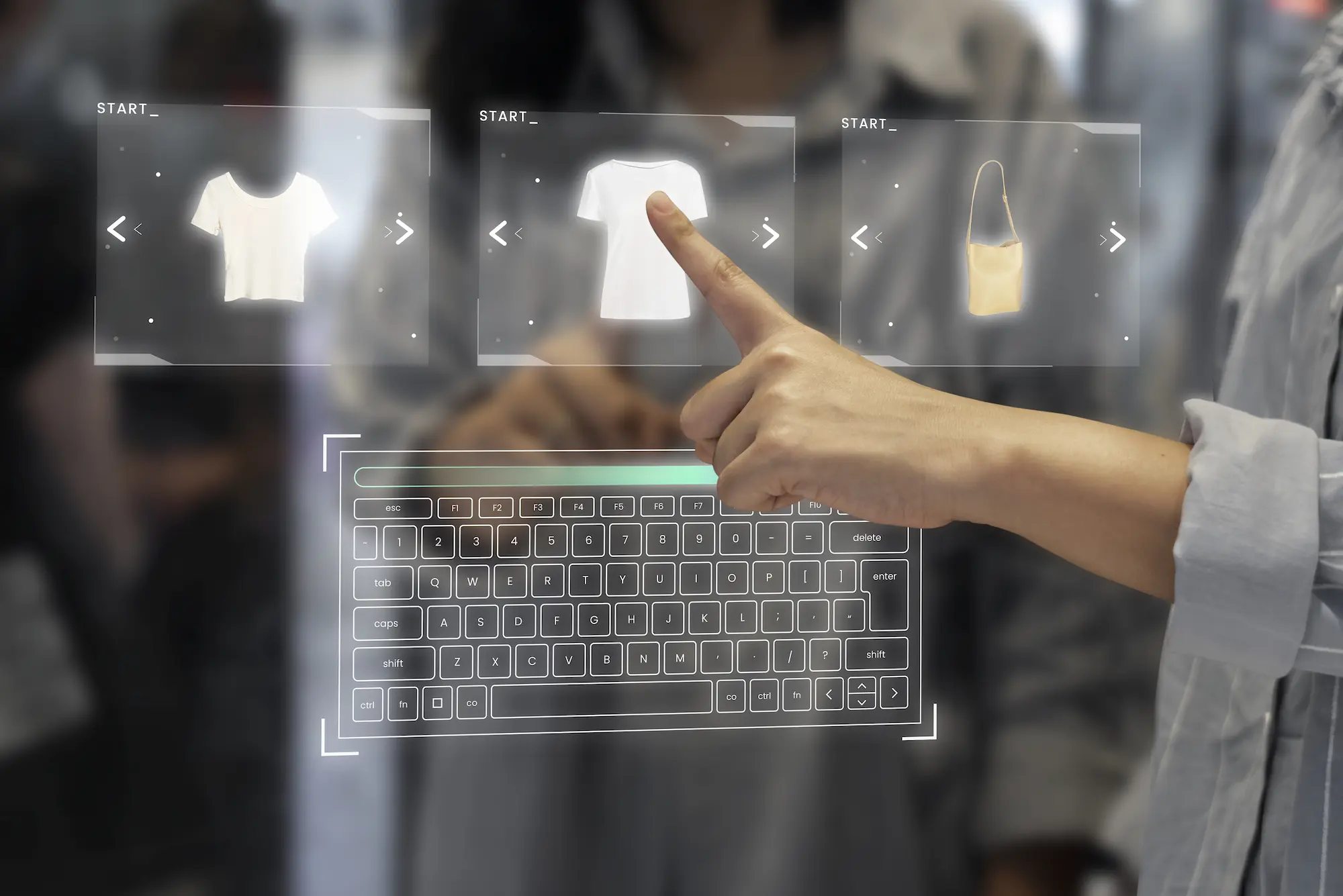Welcome to the exhilarating world of eCommerce development, where opportunities are infinite, and innovation is relentless! In today’s fast-paced digital landscape, online shopping has become an indispensable part of our lives. As businesses vie for supremacy in this highly competitive arena, mastering the art of eCommerce development has become crucial to achieving success. From small-scale startups to multinational giants, everyone is harnessing cutting-edge technologies and following emerging trends that shape consumer behavior. Are you prepared to elevate your business by diving into this dynamic domain? Look no further – our comprehensive guide on “Mastering eCommerce Development: Top Technologies and Trends to Watch” will turn you into an unstoppable force in the virtual marketplace! This post will unveil top-notch technologies such as artificial intelligence (AI), augmented reality (AR), progressive web apps (PWAs) while also uncovering game-changing patterns like personalization or voice commerce that are shaping customer experiences worldwide. Buckle up for a fascinating journey through tech-savvy strategies guaranteed to propel your business towards unprecedented growth!
The Growth of Progressive Web Apps (PWAs) in eCommerce
The Growth of Progressive Web Apps (PWAs) in eCommerce Progressive Web Apps (PWAs) are a hot topic in the world of ecommerce development, and for good reason. These apps combine the best of both worlds, offering the functionality and user experience of a mobile app with the accessibility and reach of a website. As mobile traffic continues to dominate ecommerce, PWAs have emerged as an essential tool for businesses looking to improve their customer experience. One of the biggest advantages of PWAs is their ability to offer offline functionality. This means that users can continue to browse products and make purchases even when they don’t have access to an internet connection. For ecommerce businesses, this is a game-changer as it allows them to tap into new markets and serve customers who may not have reliable internet access. Another key benefit of PWAs is their speed. Because they are built using modern web technologies such as service workers and web app manifests, PWAs load quickly and provide a seamless user experience. This is critical in ecommerce where every second counts, as slow loading times can lead to frustrated customers and lost sales. Beyond efficiency and offline functionality, PWAs offer a highly personalized shopping experience. They can be tailored to individual user preferences, allowing businesses to offer relevant product recommendations and promotions. This level of personalization helps improve customer engagement and encourages repeat business. Furthermore, PWAs are cost-effective compared to developing a separate mobile app altogether. Developing a native mobile app for multiple platforms such as iOS and Android is expensive and time-consuming. On the other hand, PWAs are built on top of existing web technologies which makes them quicker to develop and less expensive overall. Lastly, PWAs offer more flexibility in terms of deployment options. They can be installed on users’ home screens like native apps, allowing for one-click access to the site. As a result, they provide increased visibility for businesses. In conclusion, there has been a significant rise in the adoption of PWAs by ecommerce businesses. With their high-quality user experience, offline functionality, increased speed, personalization, cost-effectiveness, and flexibility in deployment, it is no wonder PWAs have become a top trend in ecommerce development. As more and more users shift towards mobile devices for online shopping, PWAs are set to become a must-have for businesses looking to compete and grow in the ecommerce space.
Headless Commerce and the Advantages of a Decoupled Architecture
Headless commerce is a popular trend in the eCommerce industry that has been gaining momentum in recent years. The main idea behind headless commerce is to separate the presentation layer from the backend systems. This decoupled architecture allows businesses to have more control over their digital storefronts, without sacrificing the robustness and functionality of their core systems. One of the key advantages of a decoupled architecture is increased flexibility. With a headless commerce platform, businesses are free to design and develop their front-end presentation layer as they see fit. This means that retailers can create visually stunning storefronts and deliver personalized experiences to their customers. Additionally, a decoupled architecture allows businesses to make changes and updates to their storefronts without having to worry about disrupting the functionality of their backend systems. Another key advantage of headless commerce is improved scalability. By separating the presentation layer from the backend systems, businesses can more easily scale their digital storefronts as needed. This is particularly important for businesses that experience sudden spikes in traffic or that need to rapidly expand their online presence. With a decoupled architecture, businesses can simply add new front-end instances as needed, without having to worry about overburdening their backend systems. A third advantage of headless commerce is increased agility. By separating the front-end and back-end systems, businesses are able to adopt new technologies and innovations much more easily. This means that retailers can quickly incorporate new trends and features into their digital storefronts, without having to completely overhaul their core systems. Despite these advantages, there are also some potential drawbacks to headless commerce. One potential challenge is increased complexity. Decoupling the front-end presentation layer from the back-end systems can introduce additional layers of complexity and require more specialized technical expertise. Additionally, maintaining a decoupled architecture may require additional resources and investment. Overall, headless commerce and decoupled architectures offer significant benefits for businesses in the eCommerce space. By separating the presentation layer from the backend systems, businesses gain increased flexibility, scalability, and agility. However, businesses considering a decoupled architecture should carefully weigh the potential advantages and drawbacks before making a decision.
Streamlining Payment Processing with Blockchain Technology
Streamlining Payment Processing with Blockchain Technology Blockchain technology has emerged as a revolutionary tool in the world of e-commerce, offering a secure and decentralized way to process payments. With traditional payment processing methods, there is often a lag-time between transactions, leaving room for fraud and errors in the system. Blockchain technology eliminates these issues by recording and verifying transactions in real-time, using a network of computers to confirm the transaction without the need for intermediaries such as banks or credit card companies. One of the key benefits of blockchain technology is its transparency and security. Because each transaction is stored on a decentralized ledger that is impossible to alter, there can be no disputing the authenticity of any payments made. This allows buyers to have greater trust in the payment process and reduces the risk of fraudulent transactions. Additionally, because blockchain technology operates independently of banks and other intermediaries, the cost of processing payments is significantly reduced. Moreover, blockchain technology has the added benefit of being able to process cross-border transactions with ease. Since international payments can often be complicated by various regulatory policies and exchange rates, blockchain technology provides a streamlined solution to this problem. With blockchain technology, payments can be processed in real-time across borders without incurring any additional fees or delays. Another significant advantage of blockchain technology is its potential for reducing chargebacks. When a customer disputes a payment made through traditional payment processing methods, chargebacks can occur which can result in significant financial losses for merchants. Blockchain technology eliminates this risk by providing an immutable record of all transactions, making it much easier to identify fraudulent claims. Overall, blockchain technology offers a range of benefits for e-commerce merchants looking to streamline their payment processing systems. By reducing the risk of fraud and errors, offering greater transparency and security, improving cross-border payments, and reducing the risk of chargebacks, this technology is gradually transforming the way we handle payments online. With more businesses adopting blockchain technology as a means of payment processing, we can expect to see significant advancements in the world of e-commerce in the near future.
Artificial Intelligence-driven Personalization for Enhanced User Experiences
Artificial Intelligence (AI) is rapidly transforming the world of eCommerce with its ability to analyze vast amounts of data and offer personalized experiences to individual users. AI-driven personalization in eCommerce helps to tailor product recommendations, search results, marketing messages, and promotions to the unique needs and preferences of each user. In this way, AI-driven personalization has become a powerful tool for enhancing user experiences and increasing customer engagement and loyalty. One of the key advantages of AI-driven personalization is that it can deliver relevant content and products in real-time, based on user behavior and preferences. For example, AI algorithms can analyze a user’s search history or purchasing patterns to offer targeted product recommendations that are more likely to convert into sales. This level of personalization can help to improve the overall ROI for eCommerce businesses by increasing the conversion rates and reducing cart abandonment rates. Another important feature of AI-driven personalization is that it enables businesses to create an emotional connection with their customers. By offering personalized recommendations and content, eCommerce businesses can show their customers that they understand their needs and preferences, which can lead to greater brand loyalty over time. Additionally, AI algorithms can help to create a more seamless and intuitive user experience by predicting what users are looking for and providing relevant content and products at every step of the customer journey. One of the most exciting trends in AI-driven personalization is the use of machine learning algorithms to automate the process of recommending products and content. By analyzing large data sets and identifying patterns in user behavior, these algorithms can learn how to make increasingly accurate recommendations over time. This means that businesses can continually improve the relevance and effectiveness of their personalization efforts without requiring constant human intervention. Finally, it’s worth noting that AI-driven personalization is still in its early stages, and there’s a great deal of potential for future innovation in this field. As AI algorithms become more sophisticated and eCommerce businesses explore new ways to leverage these technologies, we can expect to see even more exciting developments in the realm of eCommerce personalization in the years to come. Whether you’re a small online retailer or a large enterprise-level eCommerce platform, AI-driven personalization is a trend that you’ll want to keep a close eye on as you plan your strategic roadmap for the future.
Augmented Reality and its Impact on Online Shopping Experience
Augmented reality (AR) has become a game-changer in the world of online shopping. It allows customers to experience products virtually and helps them visualize products in their actual environment. The technology is rapidly becoming mainstream in retail and eCommerce. AR offers an immersive experience to customers that cannot be duplicated with traditional methods of marketing. AR technology has transformed product visualization by enabling digital representations of real-world products. It has been widely adopted by the furniture and home décor industry. Customers can visualize how a piece of furniture or home décor item would look in their homes by placing a digital representation of the product in their desired room using a smartphone or tablet. The fashion industry is also using AR to enhance customer experience. With the help of AR technology, customers can try on virtual clothes without leaving their homes. This technology is very useful for eCommerce stores that do not have physical stores. It enables customers to know how a product would fit them before making a purchase decision. AR is also being used by eCommerce stores to enhance their advertising campaigns. The technology enables customers to experience products in an interactive and engaging way, making them more likely to remember the brand and make a purchase. Customers can interact with the product virtually, see it in 3D, zoom in and out, and rotate it for better views. One of the most significant benefits of AR is that it reduces returns and increases customer satisfaction by providing an accurate representation of the product they are buying. AR allows customers to see how a product works or fits without having to physically try it on or install it. In conclusion, AR has revolutionized the way customers shop online by enabling them to experience products virtually and see how they would fit or look in real-world environments. AR technology provides retailers with an innovative way to market their products and interact with their customers in real-time. The adoption of AR technology will continue to grow as retailers seek innovative ways to enhance the customer experience and differentiate themselves from competitors.




